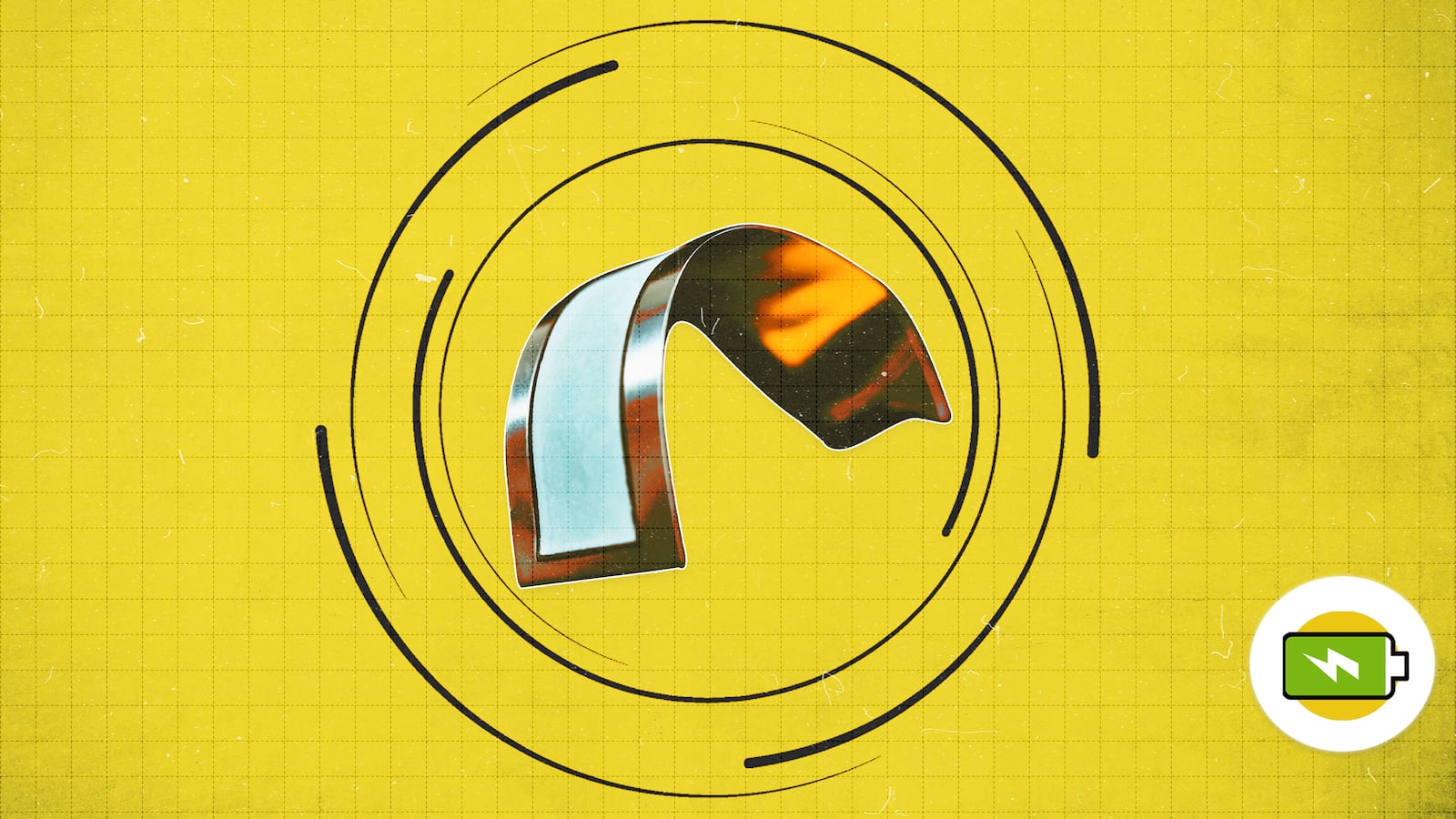Someday soon, cities will be wired with hundreds of tiny sensors to track everything from pollution to traffic to weather. 5G cell boxes will broadcast blazing fast wireless internet capable of downloading a full movie to a phone in seconds. Advanced wearable sensors that could be woven into a shirt will track your gait, heart rate, and even the chemicals in your sweat.
There’s just one thing holding back the realization of that future: the battery.
“The technology is close to being ready, it’s just the power source that isn’t there yet,” Shirley Meng, professor of nanoengineering and materials science at the University of California, San Diego, told The Daily Beast. “For something like wearable sensors, you need something that is flexible and safe enough to be worn right on your body in a wide range of temperatures.”
The dominant battery technology for consumer devices is lithium-ion, found in everything from cellphones to electric vehicles. While lithium-ion batteries pack a lot of power in a small package, they also rely on a liquid electrolyte that can be flammable when overheated or damaged. (Remember those exploding Samsung phones?) That means careful storage and a rigid casing—not exactly conducive for a sweat-monitoring shirt.
That has some companies looking at a new battery technology so nimble it can be bent and twisted, with a manufacturing process that can take place on a T-shirt screening press rather than a gigafactory. Made out of zinc, a more common metal than lithium, these batteries can be printed in as many shapes and sizes as stickers.
Imprint Energy, based in Alameda, is one of the companies working on solid-state flexible zinc batteries. Co-founder and CEO Christine Ho started working in lithium-ion batteries as a student researcher at the University of California, Berkeley, but realized that the world would need an alternative, one that didn’t rely on mining that takes place outside the U.S. (According to a White House report, China controls 60 percent of the world's lithium production.)
In January, Imprint rolled out a new battery design, ZinCore, that packs 10 times more power than previous models into a cell just one millimeter wide. Crucially, Ho told The Daily Beast, the batteries also have a wider temperature range. While most batteries slow significantly in the cold, the new version can withstand temperatures as low as -35 degrees Celsius (-31 degrees Fahrenheit), meaning it can be used to track and trace products that need to be chilled, like COVID vaccines.
Ho compared making the batteries to “packaging dirt,” because of how common the components are. “The majority of the components in our batteries are in vitamins,” she said.
And without a hard shell, those batteries can be shrunk, bent and twisted to fit into all sorts of tiny devices. Imprint is currently targeting two major markets. They can be used to power 5G cells and Internet of Things (IoT) sensors for smart cities. Imprint is also working with shipping companies on smart labels, which could send a location signal for valuable products or monitor the temperature on sensitive items like seafood or ice cream. Amid concerns about election security, Ho noted, smart labels on shipments of paper ballots powered by a wafer-thin battery could offer peace of mind.
“Batteries are often the largest real estate item on a smart label,” said Ho. “Ours can be almost invisible because it’s so small.” But Imprint’s ambitions aren’t just to stay miniature.
“Our ultimate mission is to become the de facto green, sustainable, safe alternative to lithium ion,” Ho said. “This could be designed for large-scale applications. Someone could design this into cellphones, put batteries into walls, put them in really large structural things that have never had power before.”
Zinc batteries were once thought to be a passé technology. Because they couldn’t be easily recharged but the components were cheap, they were primarily used as disposal power sources. Most consumers encountered them in hearing aids, where they could easily be trashed. Now zinc batteries are “hot,” said Chunsheng Wang, director of the University of Maryland Center for Research in Extreme Batteries.
Unlike lithium ion, which relies on rare minerals and carries significant safety risks, zinc batteries are “intrinsically safe and available,” Wang said. The major drawback, however, has been in recharging. When traditional zinc batteries are reversed to draw in and store power, zinc can collect in certain spots where electricity is most intense on the anode, forming dendrites that eventually cause the cells to short out. While the limitations vary based on chemistry and design, the batteries typically can’t make it more than a few hundred cycles.
Researchers—including Wang—have worked on modifying the electrolyte to reduce that damage and allow for faster recharging. One study from Hanyang University in the Republic of Korea reported a high performance zinc-air cell that stayed stable over 30,000 cycles.
The applications, boosters say, could be widespread because of the flexibility of the technology. There is promise for energy storage for renewable energy production as an alternative to large lithium-ion projects. Companies like Zinc8 are adapting zinc air batteries for large-scale energy storage that could power the electric grid; the company recently announced a pilot project at a Queens apartment complex, following a pilot at the University of Buffalo in 2021.
However, the chemistry advantages also make them work on a small scale. Meng’s UCSD lab worked with hearing aid battery company ZPower (now renamed Riot Energy) on silver-zinc oxide batteries whose parts could all be essentially condensed into ink form. They could then be screen-printed onto thin films with an electrode sandwiched between to make a battery less than 1 millimeter thick. According to a 2020 paper published in Joule, that battery produced at least five times the power of the same size lithium-ion battery, although recharging was still limited.
Plus, the chemistry advantages that make zinc safer also make it easier to mass produce. “Lithium ion doesn’t tolerate any water in the manufacturing process and need this very good casing,” Meng explained. “For us, it’s much easier to manufacture in the open air. You don’t need to build a dry room.”
That opens the door to plenty of opportunities, with batteries that can be printed en masse with barrels of ink, in all shapes and sizes.
“The first major obstacle is the mindset change,” Meng said. “With all the research that went into lithium-based batteries, very little progress was made on zinc. People think zinc chemistry is done. That’s so wrong.”
Imprint’s Ho said the company will be announcing a manufacturing partner soon, building on the company’s existing screen printing work with an eye on flexibility. “There’s not going to be a AA battery for IoT devices,” she said, which means that the ability to switch up the size, shape and power index on a daily—or even hourly—basis can open up new markets.
“We’re approached all the time about all the possible applications, from contact lenses to massive building-wide deployments. And so many of them are potentially earth-changing or life-changing,” Ho said. “I think back to when lithium ion was introduced 45 years ago to see how it’s now spread into vehicles and consumer electronics. I think a similar journey will happen with this chemistry.”






